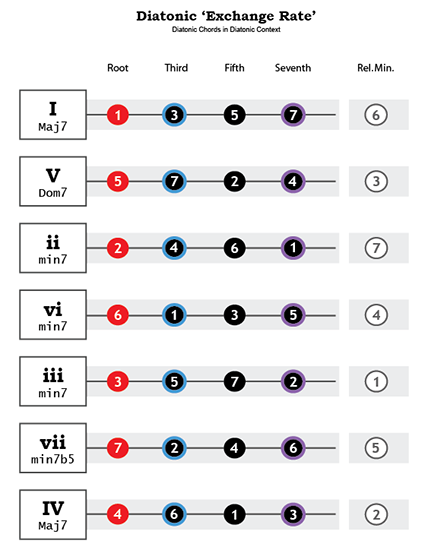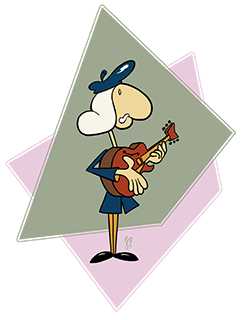When you play the root of the ii chord, you are just playing the second note of the Key scale. The third of the ii chord is simply the 4 of the Key scale. If you think of just these number for each chord in the progression, you can focus on the intervals of the Major scale instead of thinking about arpeggios relative to the Major scale.
I thought this might be helpful to come back to in light of chord solos. In a chord solo, we have a melody, say on the 'B' string. For each note we want to accompany with a chord, we have to find at least one ECT common to the chord for the rest of our fingers. For a ii chord, we would really implicate a minor strongest if we have the flat 3rd of the ii. Instead of finding the root of the ii and then finding its b3, I would rather just go directly to that note, which happens to simply be the 4 of whatever key I'm in.
The chords are ordered in 4ths/5ths, common to progressions in Western music. If you go bottom to top, you are moving in 4ths.
On the second page I grouped the ECTs in order of precedence. Minors differentiate themselves from Major by virtue of the b3, where as Dominants differentiate by the b7. You will see a pattern here: moving in 4ths, the third is the seven of the next chord in the sequence.
| diatonicexchangerate.pdf |
| exchangerate_modeboxes.pdf |


 RSS Feed
RSS Feed
